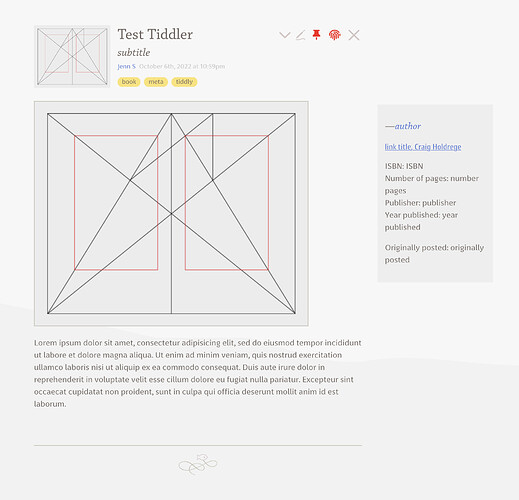Tufte’s style is known for its simplicity, extensive use of sidenotes, tight integration of graphics with text, and carefully chosen typography. See: Tufte CSS (edwardtufte.github.io)
Also see the note on Feymman Books (very famous professor in science and engineering is known for his wonderful lectures in Physics).
I am looking to see if there is any implementation of Tufte’s style in Tiddlywiki.
This can be
- a two columns tiddler
- left column with 60% of width for text
- right column for 30% of width for sidenotes
NOTE: This is different from multi columns story river or tiddlers already available.
References
Remarks
I like this excerpt from Tufte CSS project:
Finally, a reminder about the goal of this project. The web is not print. Webpages are not books. Therefore, the goal of Tufte CSS is not to say “websites should look like this interpretation of Tufte’s books” but rather “here are some techniques Tufte developed that we’ve found useful in print; maybe you can find a way to make them useful on the web”. Tufte CSS is merely a sketch of one way to implement this particular set of ideas. It should be a starting point, not a design goal, because any project should present their information as best suits their particular circumstances.


 like the look of it though.
like the look of it though.